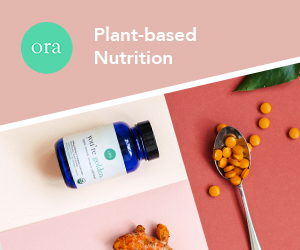Not milk? Despite aggressive ad campaigns, dairy sales are down, and plant-based milks are growing strong. People are making the switch for a number of reasons, whether it’s the environment, health, or the animals.
.jpg) If you’re open to trying a milk alternative, here are some tips:
If you’re open to trying a milk alternative, here are some tips:
- Try before you buy. Starbucks now offers soy, almond and coconut milk. So many options! My friend swears a soy milk chai tastes like a snickerdoodle cookie, and I love a vanilla coconut milk latte. It’s an easy way to test out the flavor and consistency without committing to a full gallon of milk.
- Don’t expect it to taste like milk. Think of it as a whole other beverage, or you might be disappointed. Like anything, it takes time to adjust. Maybe try drinking your coffee black for a week, then add a milk alternative. You’ll appreciate it all the more!
- Try the sweetened version first. Most plant-based milks have a sweetened and unsweetened version. I recommend trying a sweetened version first if you’re used to creamer or 2%. Once you get used to the taste, try the unsweetened version for savory cooking or if you want to cut back on sugar.
- Temperature matters. Putting a cold milk alternative into hot coffee can cause it to separate. You’ll see little floating things at the top of your drink, and wonder how life could be so cruel. Heat up your milk for hot drinks, it’s worth it! However, creamers like this one are usually fine. I also recommend making sure milk is nice and cold for cereal – it’s just much better that way.
- Consider your options. Some plant-based milks work great in savory dishes, while others are best in beverages or baking. See the descriptions below for more details. Also keep in mind that different milk alternatives vary in taste and texture, so don’t give up after only one try.
Here are some popular options:
- Coconut: It’s creamy and rich, but has a neutral taste, making it versatile in sweet or savory dishes. Full fat coconut milk (usually found in a can) is very thick and works well for curries and yogurts. But for everyday use, like over granola or in lattes, I drink a lighter coconut milk (around 4 grams of fat per cup).
- Soy: A classic milk alternative, found at any coffee shop or grocery store. It has the same amount of protein as cow’s milk, making it a popular alternative for athletes and anyone looking for extra protein. However, non-GMO soy is hard to come by, so some people avoid it.
- Almond: Sweet and simple. This is a great option for baking, over cereal, or in coffee. It usually has a thinner consistency, but if you like nutty almond flavors, this is your best bet!
- Hemp: Hemp is one of my favorite options for lattes. It gets SO frothy, and has a wonderfully nutty taste. I’ve yet to try it in baking or cooking, but I imagine it would work for both.
- Rice: The perfect way to ruin your day. It’s thin and gross. I’d prefer water in my cereal instead of rice milk.
- Hazelnut: I’ve actually only tried chocolate hazelnut milk before. It’s basically Nutella as a beverage. Highly recommend.
- Oat milk: My absolute favorite! Always thick and creamy. Works great in baking, and is especially delicious in lattes.
Of course, these are just a few options, and each version has different brands and variations (like unsweetened or vanilla). You can also try making your own milk using a blender and a nut milk bag.
Swapping out your milk for one of these options can make all the difference for your health, the planet, and the cows! 🐮
Do you have any favorite milk alternatives?
xo
allegra






